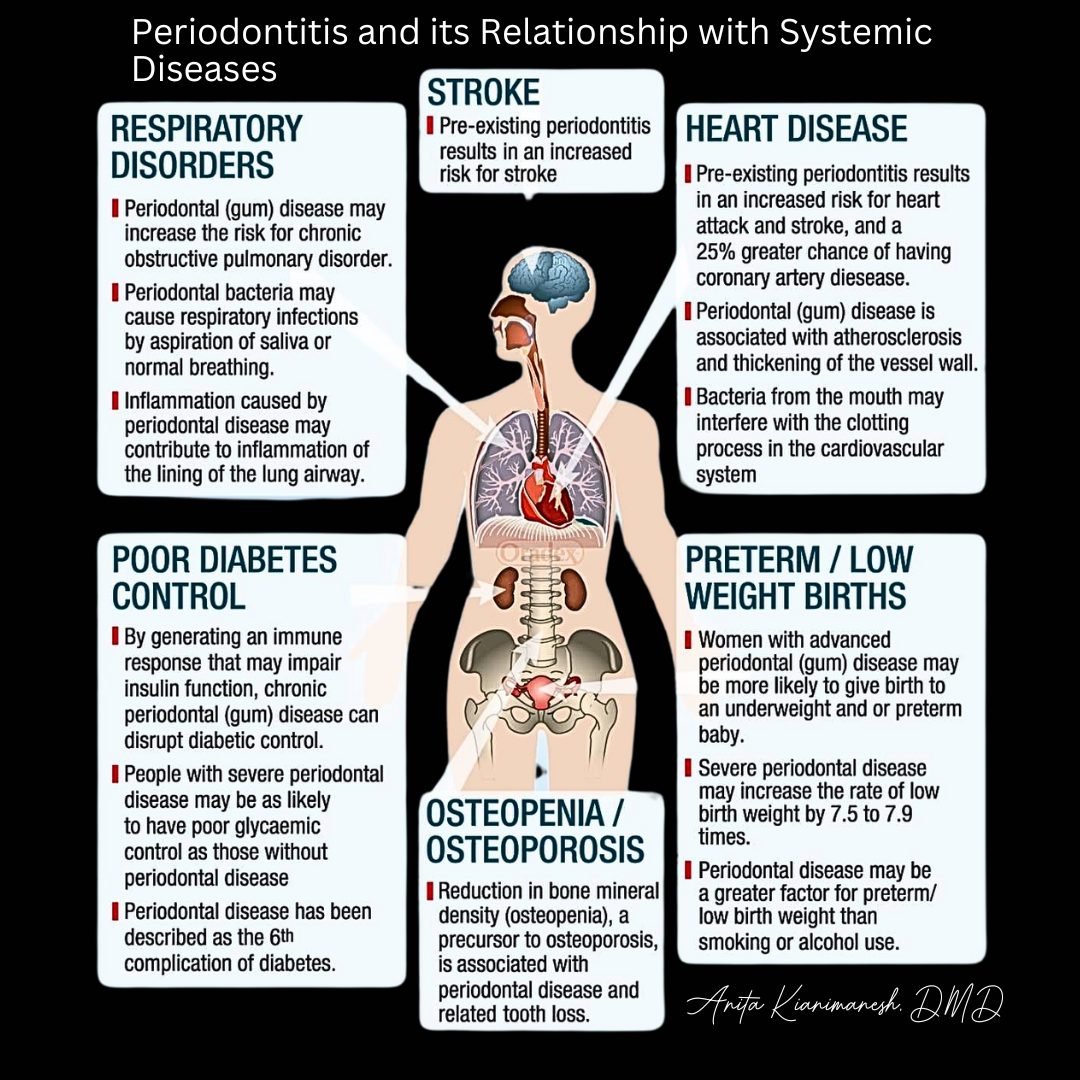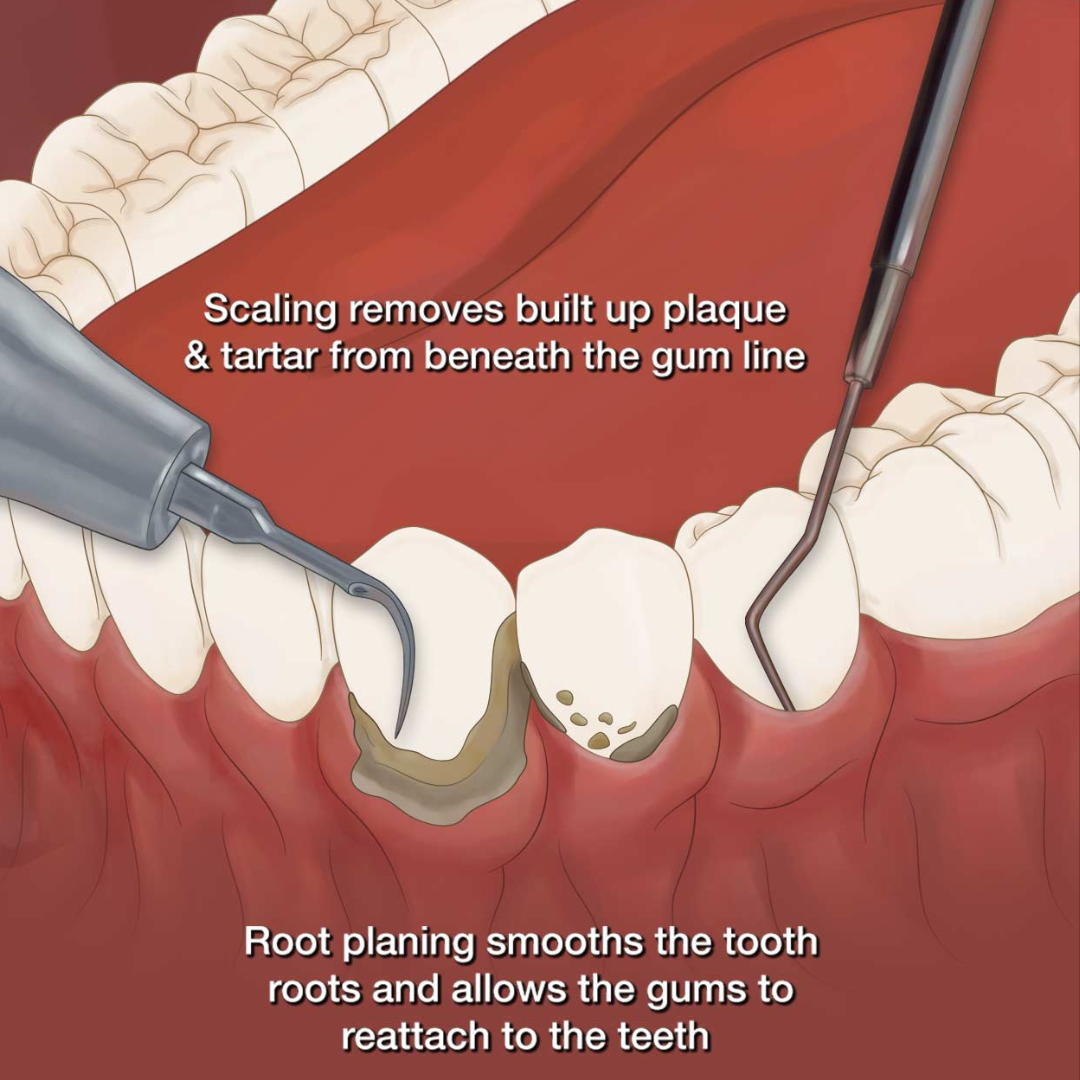gum disease | falls church, va
Root Planning and Scaling
Root Planning and Scaling
Fight gum disease and promote healthy teeth with our deep cleaning procedure, root planning and scaling. This non-surgical treatment removes tartar buildup and smooths tooth roots, promoting gum health and preventing tooth loss. Schedule an appointment today for a brighter, healthier smile.
Healthy Roots, Healthy Smile
Preserve your smile with our comprehensive root planning and scaling procedure. This non-surgical treatment addresses gum disease by removing stubborn tartar buildup below the gumline and smoothing tooth roots. This promotes gum reattachment, reduces inflammation, and prevents future plaque accumulation, ultimately safeguarding your oral health and preventing tooth loss.


What is Root Planning and Scaling?
Root planning and scaling, also known as deep cleaning, is a non-surgical dental procedure used to treat gum disease (periodontitis) by removing plaque and tartar (calculus) buildup from teeth, especially below the gumline.
Here's a breakdown of the procedure:
Scaling removes plaque and tartar from the surface of the teeth, both above and below the gumline. This is done using a scaler, which is a small, handheld instrument.
Root planing smooths out the rough surfaces of the tooth roots. This helps the gums to reattach to the teeth and prevents plaque and tartar from re-adhering. Root planing is done with a scaler or an ultrasonic device that uses vibrations to remove plaque and tartar.
Frequently Asked Questions
Root planning and scaling, also known as deep cleaning, is a non-surgical dental procedure that removes plaque and tartar buildup from teeth, especially below the gumline. This helps treat gum disease (periodontitis) and prevent tooth loss.
You might need this procedure if you have signs of gum disease, such as red, swollen, or bleeding gums, persistent bad breath, or loose teeth. Your dentist will be able to diagnose gum disease and determine if root planning and scaling is the right treatment for you.
Your dentist will first numb the area with a local anesthetic. Then, they will use ultrasonic scalers and manual tools to remove plaque and tartar buildup above and below the gumline. They will also smooth the tooth roots to promote gum reattachment. The procedure may take one or more appointments depending on the severity of your gum disease.
You may experience some gum sensitivity and discomfort for a few days after the procedure. Your dentist will provide you with instructions on how to care for your mouth after treatment, including pain management tips and dietary recommendations. It's important to maintain good oral hygiene to prevent gum disease from recurring.

